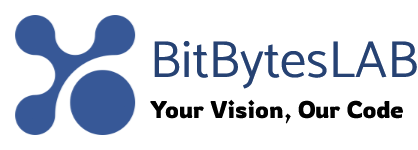Retail is no longer just about shelves and cash registers – it’s a data‑driven arena where the smartest insights give you the edge. In 2025, the battle for market share is fought in milliseconds, powered by real‑time pricing, demand forecasting, and automated inventory replenishment. Imagine a system that reads competitor prices, predicts your next‑quarter sales, and pushes optimal stock levels into your ERP—all without a human touch. That’s the future of retail, and it starts with mastering three pillars: predictive analytics, web scraping, and automation. 🎯🚀
Identifying the Pain Points
Every retailer’s pain list looks familiar: stock‑outs leading to lost sales, markdowns eroding margins, and a deluge of data that feels more like static than insight. Traditional spreadsheets can’t keep up with the volume or velocity of modern commerce. Data is the new inventory – if you don’t scrape, analyze, and act on it, you’re already behind. 📊⚡️
Core Concepts & Methodologies
- Predictive Analytics – Turning historical sales, promotions, and external signals into forecasts that drive inventory decisions.
- Web Scraping & Data Extraction – Automated harvesting of competitor prices, product specs, and social sentiment from the web.
- Feature Engineering – Crafting enriching variables like price volatility, sentiment scores, and foot‑traffic proxies.
- MLOps & Automation – Continuous model training, deployment, and robotic process automation (RPA) that keep your supply chain responsive.
- Data Governance & Privacy – Ensuring GDPR, CCPA, and industry regulations are baked into every pipeline.
By weaving these elements together, you turn raw data into actionable signals. Think of it as a well‑orchestrated orchestra where each instrument plays in tempo, delivered to your dashboard in real time. 🎶🚀
💾 There are only 10 types of people: those who understand binary and those who don’t 🔢

Expert Strategies & Approaches
1️⃣ Start with a data catalog – map every source, internal (POS, ERP) and external (competitor sites, review platforms). 2️⃣ Build a lightweight scraping layer – use headless browsers only for JavaScript‑heavy sites; rely on APIs when available. 3️⃣ Store raw data in a lake – S3 or Azure Data Lake Gen2 gives you schema‑on‑read flexibility. 4️⃣ Move to a feature store – Feast or Tecton lets you serve features in real time to models. 5️⃣ Iterate with a blend of time‑series and gradient boosting – Prophet for baseline, XGBoost for exogenous variables. 6️⃣ Deploy with containerized models – Docker + SageMaker or Azure ML pipelines. 7️⃣ Automate end‑to‑end workflows – Airflow DAGs orchestrate scraping, feature extraction, inference, and push‑to‑ERP. 8️⃣ Implement RPA for inventory replenishment – UiPath bots can re‑order stock automatically when predictions hit thresholds. 9️⃣ Monitor drift and retrain on schedule – Use Population Stability Index and set up scheduled retraining every 4–6 weeks. 🔟 Embed explainability – SHAP values help managers trust the model’s decisions.
Industry Insights & Trends (2025)
Retailers that adopted AI‑driven pricing saw a 10–15% revenue lift and a 5% drop in markdowns. Forecasting accuracy improved by 30% when competitor data was fed in real time. The shift to edge computing on POS devices means price updates happen in milliseconds, giving an edge in high‑traffic flash sales. 🚀📈
Meanwhile, zero‑trust data access and privacy‑by‑design frameworks are no longer optional—they’re compliance mandates. Graph‑based data models are surfacing, linking SKUs, suppliers, and customers for advanced inference, and serverless MLOps reduces operational overhead by up to 20%. 🌟💡
🤖 Why do programmers prefer dark mode? Because light attracts bugs! 🐛

Business Applications & ROI
Imagine a retailer pulling competitor prices every hour, feeding that data into a demand model, and automatically triggering a reorder when the predicted demand exceeds current inventory. A single end‑to‑end loop can reduce stock‑outs by 15% and carry‑over by 12%. Over a year, that translates to a $3M uplift in margin for a mid‑size brand. In addition, sentiment analysis on scraped reviews boosts cross‑sell rates by 8–12%, converting casual browsers into loyal buyers. 📊💪
Common Challenges & Expert Solutions
- Dynamic sites & anti‑scraping – Use headless browsers, rotate proxies, and implement polite crawling with back‑off strategies.
- Data sparsity for niche SKUs – Leverage hierarchical pooling and transfer learning to borrow strength from similar products.
- Feature drift – Deploy automated drift detection and retraining pipelines.
- Compliance risk – Enforce data masking, obtain consents, and document all scraping activities.
- Latency in pricing – Deploy edge models on POS devices and cache competitor data locally.
Future Trends & Opportunities
AI‑driven crawlers powered by reinforcement learning will reduce bandwidth usage by 40%. Explainable AI standards will become regulatory requirements, ensuring that pricing models can be audited. Graph analytics will enable retailers to map entire supply chains, identifying bottlenecks before they surface as stock-outs. And finally, serverless MLOps will democratize deployment, allowing smaller brands to run sophisticated models without massive engineering overhead. 🌐💪
In the end, mastering retail with predictive analytics, web scraping, and automation isn’t a luxury—it’s a necessity. Companies that build a data‑first, service‑oriented architecture will dictate the pace of the market, while others risk being left in the digital dust. If you’re ready to turn data into revenue, start by building a robust scraping pipeline, feed it into your analytics stack, and automate the loop. The future belongs to those who can act faster, smarter, and with confidence. 💡⚡️
BitBytesLab delivers end‑to‑end web scraping and data extraction solutions that empower retailers to unlock predictive insights and transform raw information into profit. Reach out today and start your data‑driven retail revolution. 🚀🛒





